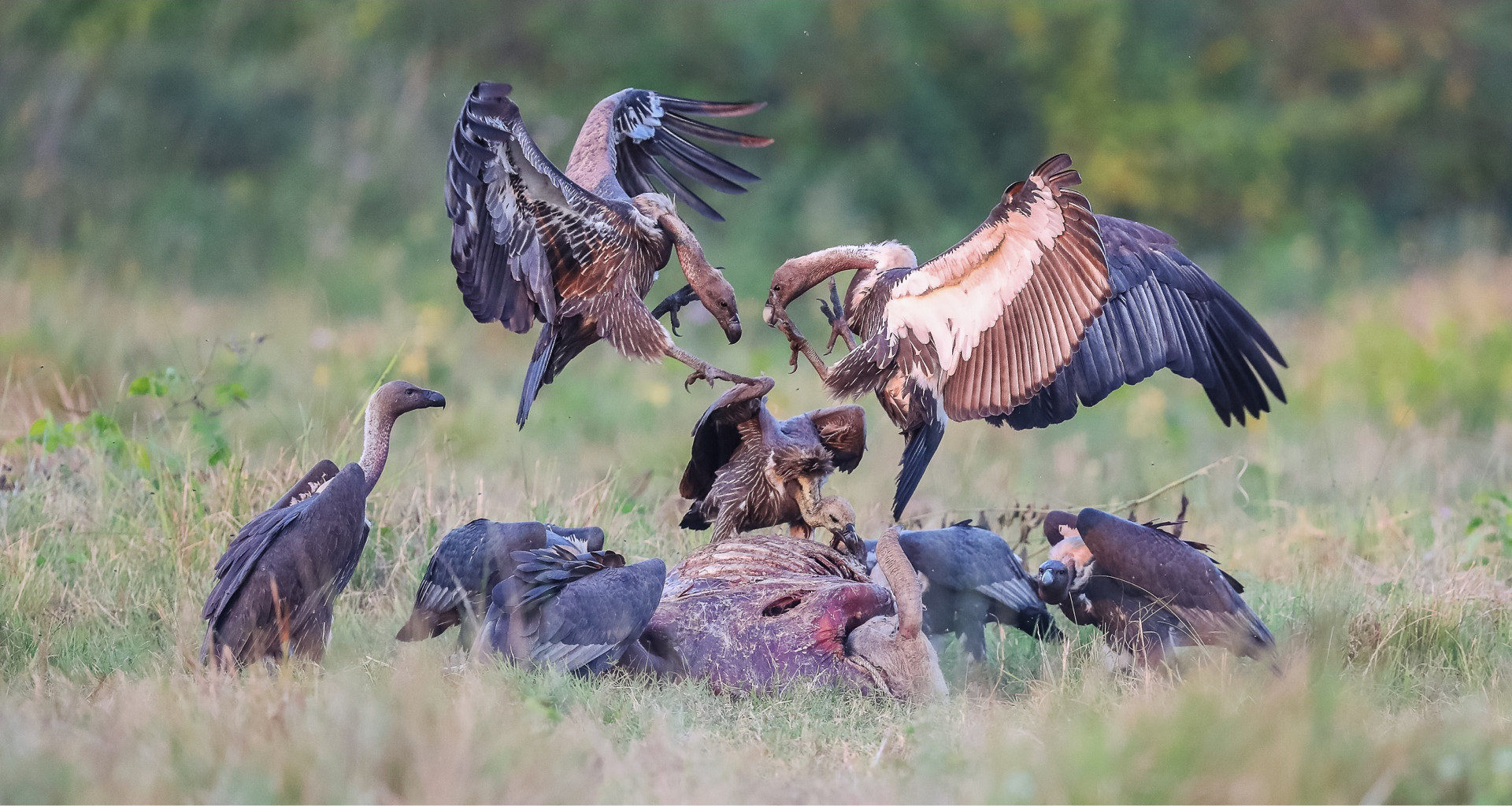Nine species of vultures are found in Nepal among which seven species have undergone considerable decline in recent years. Four species – White-rumped vulture (Gyps bengalensis), Slender-billed vulture (Gyps tenuirostis), Red-headed vulture (Sarcogyps calvus) and Indian vulture (Gyps indicus) are listed as critically endangered; one species – Egyptian vulture (Nephron percnopterus) is listed as endangered, and three species – Bearded vulture (Gypaetus barbatus), Cinerous vulture (Aegypius monachus) and Himalayan Griffon (Gyps himalayensis) are listed as near threatened (IUCN 2016). In all the cases, these species have had their status up-listed because of their massive population decline primarily in South Asia. Surveys in the lowlands of Nepal between 1995 and 2001 showed 91% and 96% decline of the White-rumped vulture and Slender-billed vulture. The causes of decline in Gyps vultures were due to the use of non-steroidal anti-inflammatory drug (NSAID) diclofenac which were widely used to treat livestock in South Asia. Vultures are exposed to diclofenac when feeding on livestock carcasses containing residues of the drug. In order to halt the decline of Gysp vultures in Nepal, both in-situ and ex-situ conservation of these species are in practice.
In response to continuing decline of vulture populations, NTNC together with Bird Conservation Nepal helped the government to establish the Vulture Breeding Centre in Kasara, Chitwan in 2008. The center covers an area of 6,375 square meters with a vulture breeding aviary and 2 holding aviaries. The center breeds Slender-billed vulture and White-rumped vulture, currently holding a total of 63 birds. Vultures from the wild stock are captured during fledgling stage and kept captive in the breeding center for their breeding and rearing. The first batch of six captive bred vultures were transferred to the release aviaries in 2017 and subsequently released in the wild. Sex determination of vultures is a resource-intensive task that often requires genetic analysis. Their sensitivity to human disturbance and slow breeding tendencies lead to their delayed procreation causing challenges in their ex-situ conservation.

